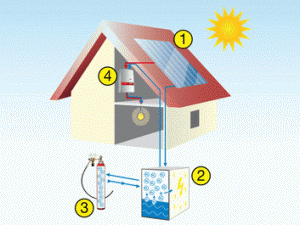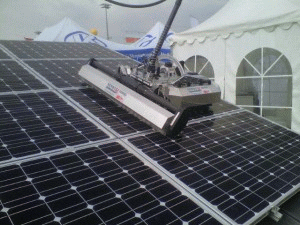The UK is in the midst of a race to install solar PV on its roof-tops from domestic dwellings to schools, hospitals, council buildings and agricultural sheds. All this is being driven by the Feed- In-Tariff (“FIT”) that has been put in place since April 2010 by the UK Government, to support renewable energy generators to invest in technology such as solar PV. The FIT provides an index-linked subsidy for power generated for 25 years, providing an ideal investment asset for pension funds and long-term investors.
Whilst roof-top solar no doubt has its place, an innovative company based in Scotland and Somerset, SolParks, has looked further afield and brought another variant of solar PV to the UK market – the solar car canopy.
The solar canopy is a structure built over a car parking space with solar PV panels mounted on its top. The canopies bring a number of direct user benefits such as shelter in poor weather, keeps cars shaded from the heat of the sun and can add further to user amenity, by adding in electric vehicle charging points (powered by renewable power, rather than mains) and using LED lighting under the canopies, which can be sensor operated, rather than large street lighting, to provide bright, safe car parking.
The power generated by the solar PV can be supplied direct to the car park owner, or can be supplied to the national grid.
The environmental and user benefits are obvious but also extend to easing legal issues between landlord and solar PV operator.
Elliot Roe of Solparks says “we researched the market for more innovative solutions for solar PV and found car park canopies in both France and USA, where the markets are far larger. The benefits in the UK are obvious as well and we are innovating even further by using the FITs to enhance the financial benefits for users.”
Solparks is looking for installations of 12 car parking spaces up to 100. Roe goes on to say “we can provide the installation to a site owner without any cost to them. We undertake the planning consent, construction works, grid connection and pay for the canopies and solar PV. The user in return receives discounted power and gains the benefits for their car park users. The power they can’t use on site is exported to the grid.”
Using the power generated from solar PV on site can save the landowner power costs and can provide a valuable hedge against the threat of rising electricity prices. It also sends a strong, visible, message to customers about green credentials.
Roe says “ we are happy to work with any size of car park owner; however, an ideal customer would be one with multiple car parks. That way the customer achieves wide spread benefit, and the amount of power generated becomes a meaningful contribution to reducing their power bills.”
Solparks feels its solution offers much more simplicity for building owners. The solar PV doesn’t compromise the core building, no structural surveys or reinforcements are needed and we can also accommodate re-development much more readily.
So why, given all these advantages, is the product limited to 100 spaces in any one location ? Roe comments that “the changes in the FIT from 1 August make it very difficult, with the FIT alone, to achieve the sorts of levels of returns that are needed to fund a roll-out on a larger scale. There are other commercial solutions that could be looked at to achieve much larger deployments however and we would be delighted to hear from any potential Solparks customer”
Solparks provides a fully turn-key service to those wanting to purchase rather than lease. The service includes planning, grid connection, Ofgem accreditation, procurement of all materials and onsite installation. Solparks can also provide an ongoing operation, maintenance, monitoring and reporting service.
The Solparks product comes with a full 25 year warranty over the steel and PV installations plus a 2 year workmanship warranty.
And what of electric vehicle transportation ? Solparks believes solar car parking can play a large role in the infrastructure needed for electric vehicles – both cars and scooters. Roe says “adding charging points below the canopies, powered by the sun, is an easy next step and can provide further amenity to customers”.
Given the benefits, we expect to see many Solparks installations starting to appear, and provides large car park owners with another potential revenue stream from an asset that they already own.
For more information email elliot@solarfeedintariff.co.uk


